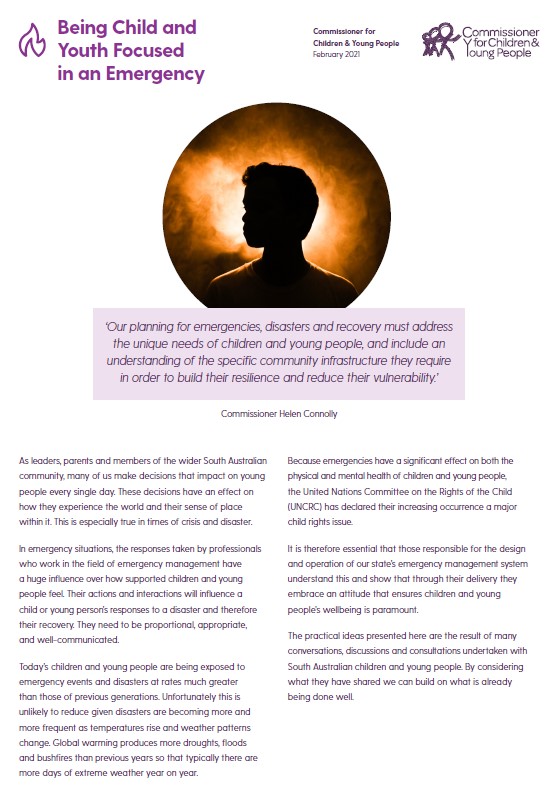Planning for emergencies, disasters and recovery, must address the unique needs of children and young people across our metropolitan and regional communities. It must also include an understanding of the specific community infrastructure they require to build their resilience and reduce their vulnerability during and following an emergency or disaster.
Adults who are responsible for emergency management must commit to the view that children and young people are critical stakeholders. This means in practice they must ensure their operations reflect this view. This guide provides some practical ideas for ways in which this can be achieved. Some of the ideas have come from children and young people themselves. They include ideas on ways their competencies can be best utilised during an emergency as will as enabling them to contribute ideas and actions to the recovery process. This will also ensure that their interests, ideas and expectations can be considered and factored in while their emerging capacity for leadership is simultaneously nurtured.

